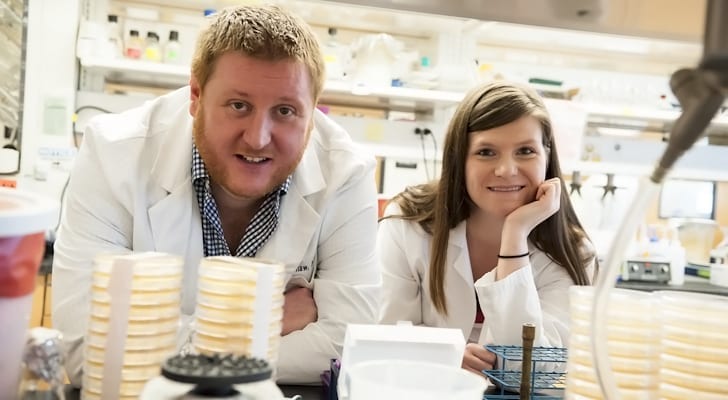Microbiologists and chemists at the University of South Florida have developed and patented a synthetic compound that has shown antibiotic action against methicillin resistant Staphylococcus aureus, also known as MRSA, which can cause many serious infections and deaths.
Early on, MRSA was a hospital-acquired infection and became especially problematic in hospitals and nursing homes where patients at greater risk of infection than the general public fell victim to the bacterium. But MRSA has now developed into an infection that can be community-acquired. That trend is the result of hypervirulent MRSA strains that have displaced the existing hospital associated-MRSA.
“In recent years, MRSA has become resistant to vancomycin and threatens to take away our most valuable treatment option against staphylococcal infections,” said University of South Florida microbiologist Dr. Lindsey (Les) Shaw, whose laboratory developed the new quinazoline-based compounds. “Quinazolines are a class of compounds that have been used in treating malaria and cancer and have recently shown potential as antibacterials.”
Quinazoline is a compound class made up of two fused six-membered aromatic rings, a benzene ring and a pyrimidine ring. Derivatives of the quinazoline compound class have been used especially in cancer treatments.
“In the last 70 years, despite the discovery and use of antibiotics to treat infections, bacterial disease remains the second-leading cause of death globally, especially among children and the elderly,” noted Shaw. “In the U.S. alone there are two million hospital acquired infections annually with at least 100,000 deaths, many resulting from bacteria resistant to current antibiotics. We need new drugs to fight these infections.”
The groundbreaking work in the Shaw laboratory at USF involves microbiologists and chemists working together to find new compounds that can be drug candidates for a wide range of pathogens including, but not limited to, S. aureus.
Former USF chemist Dr. Roman Manetsch, now at Northeastern University, worked with Dr. Shaw to move the research from its preliminary stages and continues to collaborate with the USF scientists.
“The quinazolines were interesting to us due to their unexpected antibacterial activity,” he explains. “These compounds were synthetically tractable, allowing my research team to prepare a good number of compounds in relatively short amounts of time. Now, we are assessing whether the compounds possess the right physicochemical properties to make them bioavailable for in vivo studies.”
In December 2014, Shaw, Manetsch and colleagues received a patent (2, 4- Diaminoquinazolines as Anti-Bacterials) for the compounds they created that show great promise against MRSA and other infections.
In the search for new antibiotics, the USF researchers applied the skills of microbiology, molecular biology, medicinal chemistry and organic chemistry to modify and test many versions of quinazolines.
In the current published study, the researchers investigated and assessed four of the most active quinazolines – numbered 28, 32, 50 and 53, described as ‘frontrunners’ – for potential antibiotic development based on their mutation frequencies and physiochemical properties.
“Using mouse models of infection, we set out to determine the spontaneous mutation frequency of these four quinazolines, knowing that an important attribute of potential microbial agents is that their development of resistance is not easily attained,” explained Shaw. “We found excellent results with two of our four frontrunner compounds. They provided complete, or almost complete, protection to mice infected with S. aureus and superior to vancomycin when that drug used as a control agent.”
“The potencies of our frontrunner compounds 32, 50, 53 and 62 will make an excellent platform for the future development of antibacterial agents,” concluded Shaw.



